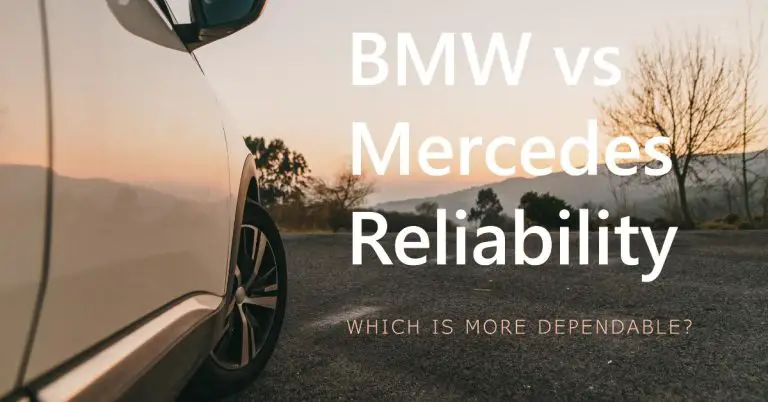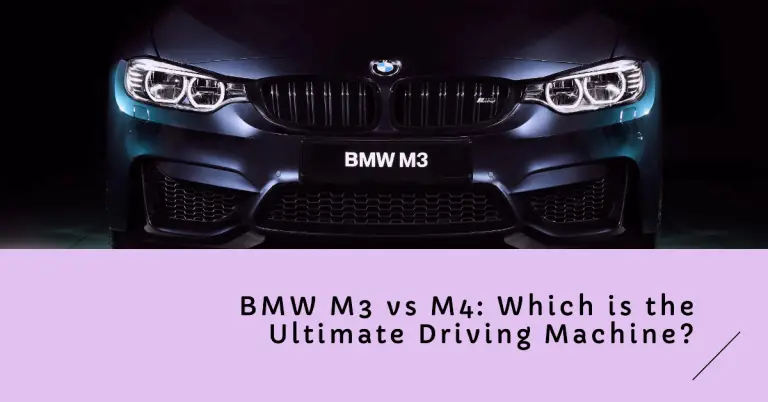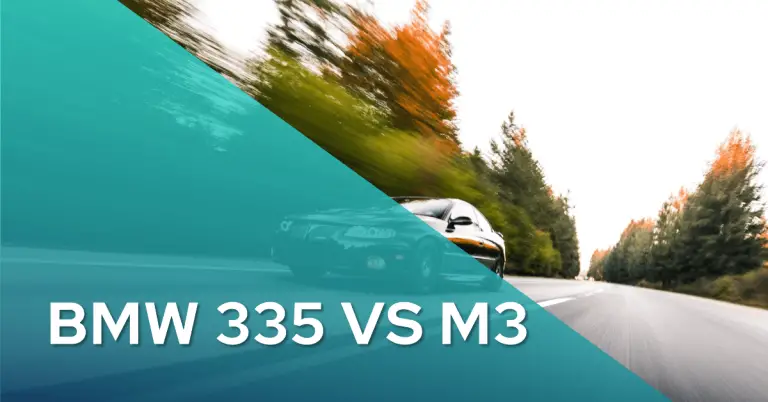BMW M340i vs M3: Which High-Performance BMW is Right for You?
If you’re a driving enthusiast shopping for a high-performance BMW sedan, two models likely on your radar are the BMW M340i and the legendary BMW M3. But which of these stellar sedans is the better choice?
The M340i is the newest performance variant in BMW’s 3 Series lineup. With its turbocharged straight-six engine and available all-wheel drive, the M340i promises to deliver ample power and all-weather grip.
The M3 has long stood at the pinnacle of BMW’s sedan offerings. With precision handling, track-ready suspension, and racetrack-bred styling cues, the M3 remains the ultimate driving machine seeking to devour curves and conquer competitors.
This comprehensive comparison examines how the M340i and M3 stack up across critical categories including performance, design, technology, practicality, and value. Let’s explore these two amazing sedans in-depth to help you decide if the M340i is a worthy 4-door thrill ride, or if the legendary M3 still can’t be dethroned.
Performance and Powertrains
The M340i and M3 each boast muscular engines delivering vigorous acceleration. But they take different approaches to generating that power.
M340i’s Refined Turbocharged Power
The M340i packs a 3.0L twin-scroll single turbo straight-six engine making 382 horsepower and 369 lb-ft of torque. This turbocharged power plant enables the M340i to sprint from 0-60 mph in just 4.1 seconds.
With peak torque available from 1,800 to 5,000 RPM, the M340i feels responsive at both low and high speeds. The standard 8-speed automatic transmission delivers fast, crisp shifts to keep the engine in its optimal operating range.
Drivers can customize the M340i’s performance via Eco Pro, Comfort, Sport, and Sport+ driving modes. Sport+ quickens throttle response for enhanced acceleration.
M3’s High-Revving Track-Bred Engine
The M3 utilizes a more exotic S58 twin-turbo 3.0L inline 6-cylinder engine generating 473 horsepower and 406 lb-ft of torque. This allows the M3 to rocket from 0-60 mph in 3.4 seconds when equipped with the optional 6-speed manual transmission.
With its lofty 7,200 RPM redline, the M3’s engine loves to run up through the rev range. Peak torque doesn’t arrive until 2,650 RPM, giving the M3 a high-strung power delivery focused on top-end power versus low-end torque.
The M3 can be configured as rear-wheel drive or all-wheel drive. Enthusiasts applaud the purity of rear-drive, but all-wheel drive provides more traction and better real-world acceleration.
Engine Soundtracks
Part of the thrill of performance driving is an inspiring engine soundtrack. Here too the M340i and M3 take different approaches.
The M340i has a subdued exhaust note during casual driving. But switch to Sport mode and its turbo-six emits a pleasing growl. It’s suitably muscular without drawing too much attention.
The M3 announces itself with a raspy, aggressive exhaust note designed to get pulses pounding. Activate the M Sound button and the soundtrack swells louder and richer. The M3 is the clear winner for driving exuberance and aural excitement.
Fuel Efficiency
Given their high-performance dispositions, neither the M340i nor M3 are fuel misers. However, the M340i’s turbocharged engine enables it to drink slightly less fuel during normal driving.
- M340i: 20 mpg city / 27 mpg highway / 23 mpg combined
- M3: 15 mpg city / 21 mpg highway / 17 mpg combined
This gives the M340i a slight edge for long distance cruising, while the M3 is the pick for short joy rides where mpg takes a backseat to smile-inducing performance.
Performance Summary
The M340i offers vigorous thrust from its turbocharged engine, while the M3 rewards skilled drivers who can unleash itsstratospheric high-RPM power. The M340i has an accessible torque curve for everyday driving, while the M3 comes alive at higher revs.
Both are tremendously quick sedans, but the M3 ultimately pulls ahead with track-ready suspension and tuning that unlocks its performance potential on winding roads or closed courses. For pure exhilaration, the M3 remains the gold standard.
Exterior Design and Dimensions
The M340i and M3 share the core 3 Series sedan body, but each adds unique styling touches befitting their performance credentials.
Exterior Styling Cues
Compared to a standard 3 Series, the M340i gets an aggressive mesh grille, aerodynamic front bumper, and rear diffuser. But the M-specific touches are relatively subtle.
The M3 makes a much bolder visual statement. Flared fenders, large front air intakes, a bulging hood, quad exhaust tips, and prominent rear lip spoiler telegraph its track-honed capabilities.
Exterior Color Choices
Both the M340i and M3 offer excellent exterior color choices from understated grays and silvers to vibrant reds, blues, oranges and greens. The M3 also offers eye-catching matte paint finishes and exposed carbon fiber trim options to amp up its street presence.
Wheels and Brakes
The M340i runs 18-inch wheels with all-season tires. Its blue-painted brake calipers add a hint of flair.
The M3 rolls on standard 18-inch front, 19-inch rear staggered wheels. Upgraded 19-inch front, 20-inch rear track-ready tires are also available. Red brake calipers peek out from the large cross-drilled rotors and signal the M3’s competition DNA.
Exterior Dimensions
Being based on the 3 Series sedan platform, the M340i and M3 share identical exterior dimensions:
- Wheelbase: 112.2 inches
- Length: 185.5 inches
- Width: 71.1 inches
- Height: 56.8 inches
So you don’t give up any interior room or practicality opting for the more hardcore M3. You just get a lot more curb appeal for the tradeoff.
Interior Design and Features
Step inside the M340i and M3 and you’ll find interiors excellently tailored for performance driving with luxury trimmings.
Seating and Cargo Capacity
Both models provide seating for five passengers in the same 2+3 configuration. Legroom is identical in front and rear seats. Headroom comes in at 40.3 inches in front, 37.6 inches in back.
The M340i has 17.0 cu-ft of cargo space, expandable to 47.9 cu-ft with the rear seats folded down. The M3 matches those cargo figures to retain family-friendly utility.
Cabin Materials and Finish
BMW is renowned for superb interiors, and both models live up to expectations. The M340i features leatherette upholstery and interior trim made from SensaTec simulated leather with aluminum tetragon accents. Opt for the luxurious Vernasca leather and additional wood or aluminum inlays.
The M3 raises the opulence factor with standard Vernasca leather, carbon fiber trim, and aluminum tetragon accents. Available Deiringer leather in exotic two-tone color combos feels perfectly appropriate for a vehicle of the M3’s pedigree.
Both cabins exude quality craftsmanship with excellent fit and finish throughout. The M3 once again nudges ahead with its exemplary materials selection befitting its flagship status.
Infotainment and Displays
The M340i gets the latest version of BMW’s iDrive infotainment system running on a 10.3-inch center touchscreen display. Crisp graphics, natural voice control, and integrated navigation make accessing music, apps, and driving metrics highly intuitive.
The M3 shares this same excellent iDrive interface. It also adds M-specific displays like an engine ‘rev’ bar, power and torque meters, and a lap timer to enhance the driving experience.
Safety and Driver Aids
Both the M340i and M3 are equipped with all the latest safety and advanced driving assistance features:
- Blind spot monitoring
- Rear cross traffic alert
- Rear parking sensors
- Adaptive cruise control with stop & go
- Lane keeping assist
- Automatic high beams
- Automatic emergency braking
- Evasion assistant
- Extended traffic jam assistant
These systems can help avoid collisions and make highway driving less stressful, although some driving purists prefer minimizing driver aids to heighten engagement.
Overall the M340i and M3 serve up interiors blending luxury, technology, and performance in a beautifully cohesive package. The M3 once again nudges ahead with its uplevel materials and M-specific displays. But both excel at making time behind the wheel special.
Practicality and Daily Driving
For four-door sedans with potent performance, the M340i and M3 manage to remain remarkably practical choices for daily use scenarios like commuting, errands, and road trips.
Passenger and Cargo Space
The rear seat dimensions are identical in both vehicles, with ample legroom for adults up to 6-feet tall. Entering and exiting the back seat is also easy thanks to the large rear door openings.
The trunks offer competitive cargo room. The M3’s slightly higher liftover height makes loading bulkier items a bit more difficult, while the M340i’s lower trunk floor simplifies tossing in luggage. Overall trunk capacity is essentially a wash.
Comfort and Noise
Interiors are hushed at highway speeds, with minimal wind or road noise apparent. The M3 generates more mechanical sounds from its high-revving engine, which some drivers enjoy as sensory feedback. Even still, noise levels remain low enough for relaxed cruising.
Front seats in both models strike an excellent balance between comfort for long drives and aggressive bolstering to keep occupants firmly planted during aggressive maneuvers. The rear seats are similarly accommodating for average height adults.
Ownership Costs
Performance models typically suffer higher ownership costs due to factors like premium fuel requirements, higher insurance rates, and additional maintenance.
The M340i has a lower starting price than the M3, which offsets some ongoing costs. It also uses slightly less gas. But both models command premium unleaded fuel.
Insurance will be pricey for either due to their high horsepower and value. The M3’s extra performance results in higher insurance premiums.
Dealership maintenance plans help stabilize costs, though the M3’s more exotic engine will likely incur slightly higher service bills.
Reliability
Both BMW sedans average four out of five for reliability in J.D. Power ratings, which is good for the segment. Owners report few mechanical issues within the new car warranty period when following prescribed maintenance.
The M340i’s engine design has been proven reliable in other BMW models. As the newest M3 generation launched in 2021, long-term reliability remains less established. But overall BMW builds well-engineered vehicles with quality components.
For those seeking practical daily transportation along with pulse-pounding performance, the M340i and M3 both merit strong consideration. While the M3 commands higher limits, its everyday comfort and accommodations are not significantly compromised.
Pricing and Value Comparison
For shoppers debating between the M340i and M3, a key factor is which model offers the best overall value relative to MSRP. Let’s break down their pricing and projected retention of value over time.
Base MSRPs
The BMW M340i starts at an MSRP of $56,000 including destination charges. For that sum buyers get a well-equipped performance sedan lacking little. Still, most owners will add $5,000 to $10,000 in options to unlock the M340i’s full potential.
The BMW M3 begins at an MSRP of $70,895. That’s a $15,000 premium over the M340i before adding pricier options packages. Fully equipped, it’s easy to crest $80,000 in an M3.
Options Pricing
Popular options like advanced driving aids, premium audio, and attractive wheel designs run similar amounts for both models. Unique performance upgrades for each model start pushing the M3’s price higher.
Example upgrades for the M340i like a limited-slip differential, adaptive M suspension, and high-performance tires add around $5,500.
The M3 can be outfitted with $8,150 carbon ceramic brakes, a $3,100 competition package, and a $2,500 shadowline exterior trim; taking the price tag north of $85,000.
Lease Deals
With a lower starting price, the M340i generally has lower monthly lease payments in the $700 to $900 range. The M3 leases for $1,000 to $1,200 monthly when keeping to a budget of under $100,000.
Financing Terms
BMW offers enticing 1.9% to 2.9% APR financing for up to 60 months on both models. This allows buyers to minimize interest fees on what are still sizeable purchases.
Resale Value
ALG predicts the M340i will retain 51% residual value after 36 months. The M3 is expected to hold 59% of its original value in that same timeframe.
The M3’s storied reputation ensures strong resale value year after year. But the M340i also performs well relative to its lower initial transaction price.
Overall Value
The M340i delivers stellar performance and driving enjoyment at a more accessible price point. For budget-focused buyers, it’s the value pick.
The M3 remains the pinnacle of BMW sedans with power and handling beyond the M340i’s reach. For diehard BMW fans with the budget, it presents compelling value too.
Both are sound purchases for the right buyer. The M340i favors value, while the M3 is worth the premium for purists wanting the best BMW engineers can deliver.
Conclusion – Which High Performance BMW is Best?
The BMW M340i and M3 represent two liquorish choices for shoppers desiring four-door practicality blended with authentic BMW M-tuned performance.
Drivers wanting a potent yet refined daily driver will be well-served by the Mercedes-Benz M340i. It delivers stirring turbocharged thrust and athletic handling with an accessible price and maintenance costs easier to stomach.
For maximum driving domination, the BMW M3 remains the sport sedan holy grail. Its stratospheric engine, race-bred chassis, and iconic M design cues tick every box for an ultimate driving machine. The M3 gives nothing less than BMW’s absolute best.
Ultimately the M340i will satisfy many with its balanced blend of performance and sensibility. But for buyers who insist on the most exhilarating BMW driving experience money can buy, the M3 retains its crown. Its six-figure cost demands full commitment to extract its ultimate potential. But few vehicles offer a purer and more intoxicating driving experience.







